The work of photographer Abbey Gilbert is an exploration of her sexuality, playing with gaze, eroticism and vulnerability. Her photos capture intimacy in a way that’s fragile and fleeting: a soft touch, a bare back, a gentle embrace, but also passionate blurs and careless nakedness. It’s like someone opening up and inviting you to look at the periphery of their memories – little flashes of deep feelings – or a fragment of their dreams.
The result is a visual language of eroticism that focuses on connection and shared space and time, an intimacy that moves beyond sex. Very powerful, but it can shatter at any moment.
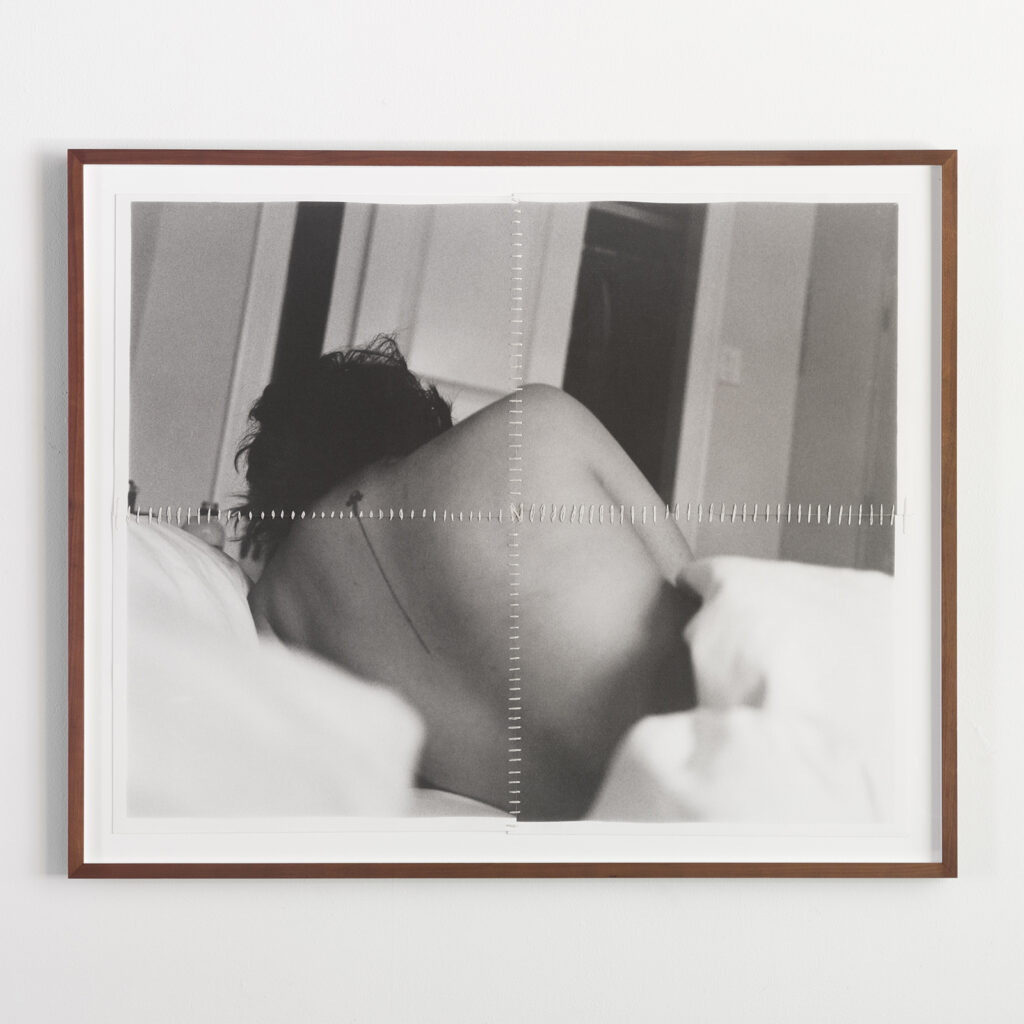
The first work highlighted on your website consists of four photos sewn together, with the stitches becoming a very prominent visual element. I love the fragility of this work. What do the stitches represent for you, and what inspired you to create this?
This was the first print that I’ve ever sewn together. The stitching came out of necessity for this image, because I was creating this work for the Lacuna exhibition and was in a major time crunch. I ordered sheets of paper that arrived damaged and was very set on printing on that specific type of paper. I quickly went into problem-solving mode and thought about how I could salvage the material, which resulted in dissecting and rejoining the image. Since stitching that piece, I’ve thought about how in relationships and in creating artwork, I have a hard time letting go. I’m an overthinker and attempt to fix things that maybe don’t need to be fixed, or aren’t fixable; sewing is how I work through it.
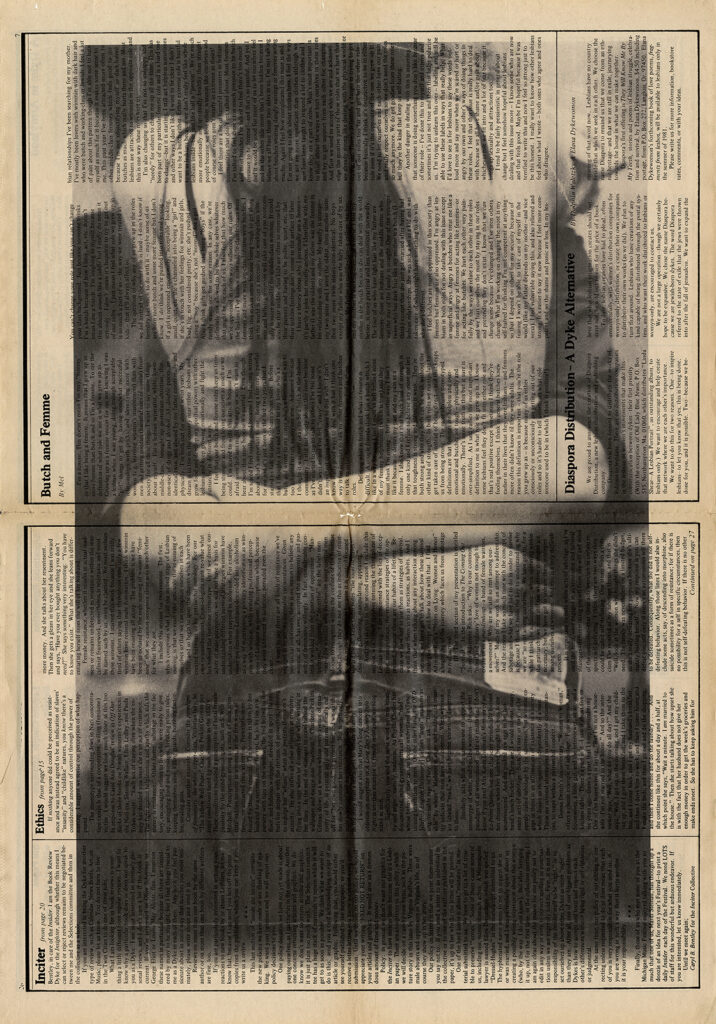
Your photos really capture the vulnerability of intimate moments. How do you create the circumstances for getting the right shot, without losing the vulnerability needed?
Most moments are either actively happening and I have to pause them, or I put a mental pin in them to revisit and recreate later. For example, in the image printed on the newspaper that says ‘Butch and Femme’ the person depicted in the photo was hugging me in a similar way earlier that afternoon. Because of how special the moment felt, I asked them if we could re-enact that moment so I could produce the image. In the image of the woman in front of the window putting her clothes on, Ash Changing (Hudson), she was doing so before I took the photo, and I asked if she could undress herself and then redress so I could capture that beautiful moment.
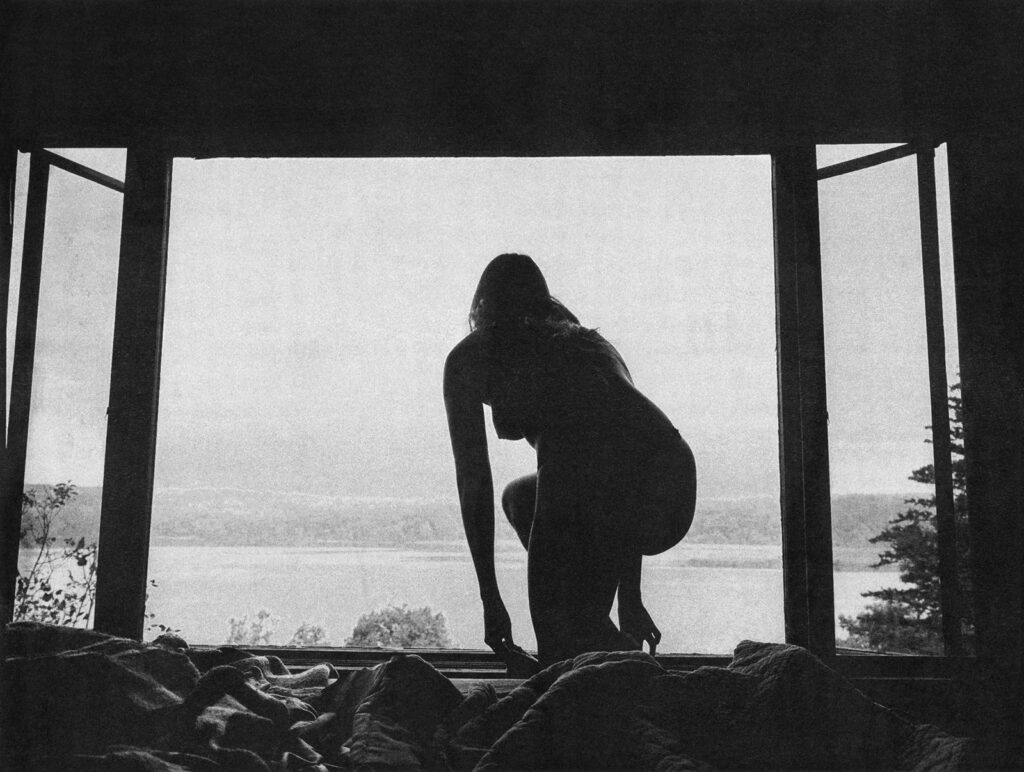
I find that a lot of (particularly male) photographers tend to approach eroticism and their own gaze in a way that can become quite gratuitous and alienating. To me, their “explorations of the human form” often just seem like nudity for its own sake. How do you approach eroticism in a visual way without it becoming nudity for the sake of nudity?
I agree. I think I enter this realm with a bit more of a level playing field, as I’m usually nude as well. The majority of the time, the people who are nude in my photos were already undressed to begin with. I believe eroticism to be much deeper than sex. Touching someone’s hand in a certain way, or pushing hair out of someone’s face can evoke eroticism. Eroticism exists in a myriad of ways and which Audre Lorde puts so eloquently in Uses of the Erotic: The Erotic as Power. Lorde states, “the erotic functions for me in several ways, and the first is in providing the power which comes from sharing deeply any pursuit with another person. The sharing of joy, whether physical, emotional, psychic, or intellectual, forms a bridge between the sharers which can be the basis for understanding much of what is not shared between them, and lessens the threat of their difference.”
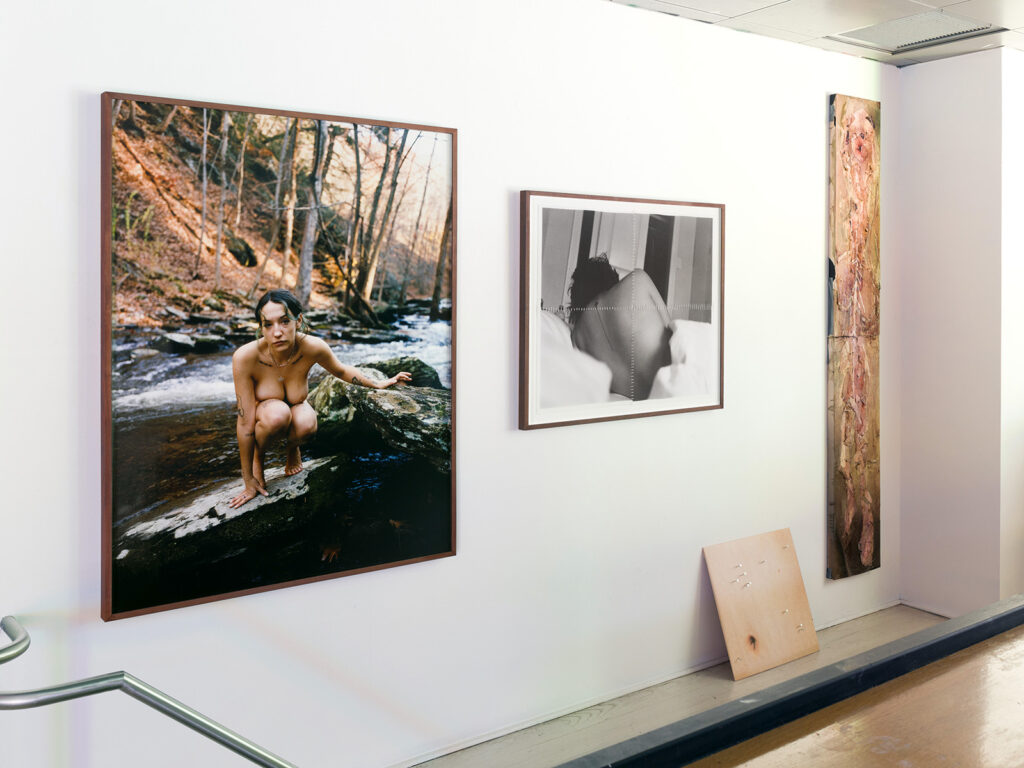
In 2022 you curated the exhibition Lacuna, which featured work by you as well as Anna Romanofsky and Joni. Obviously, the context in which a work is presented can really change its meaning. Did curating your own work next to other artists impact the way you looked at it?
Curating Lacuna absolutely impacted the way I engaged and witnessed my own work, especially in relation to Anna and Joni’s artistic practices. The title of the show, which means ‘unfilled space’, felt like a fitting realm for us to frame our collective work within. It encapsulated the themes prevalent within our different mediums and allowed us to further explore how our work can be experienced – particularly in relation to one another. Now, when approached for or submitting to group shows, I lean towards including works that I believe can best capture the larger thesis of the exhibition. Not to say that I didn’t before, but now I have a better framework as to how I want to situate myself within the larger narrative. I try to think of my work as a limb to the entire body of work that is then displayed, always taking into consideration the context of the surrounding artists’ work when selecting mine.
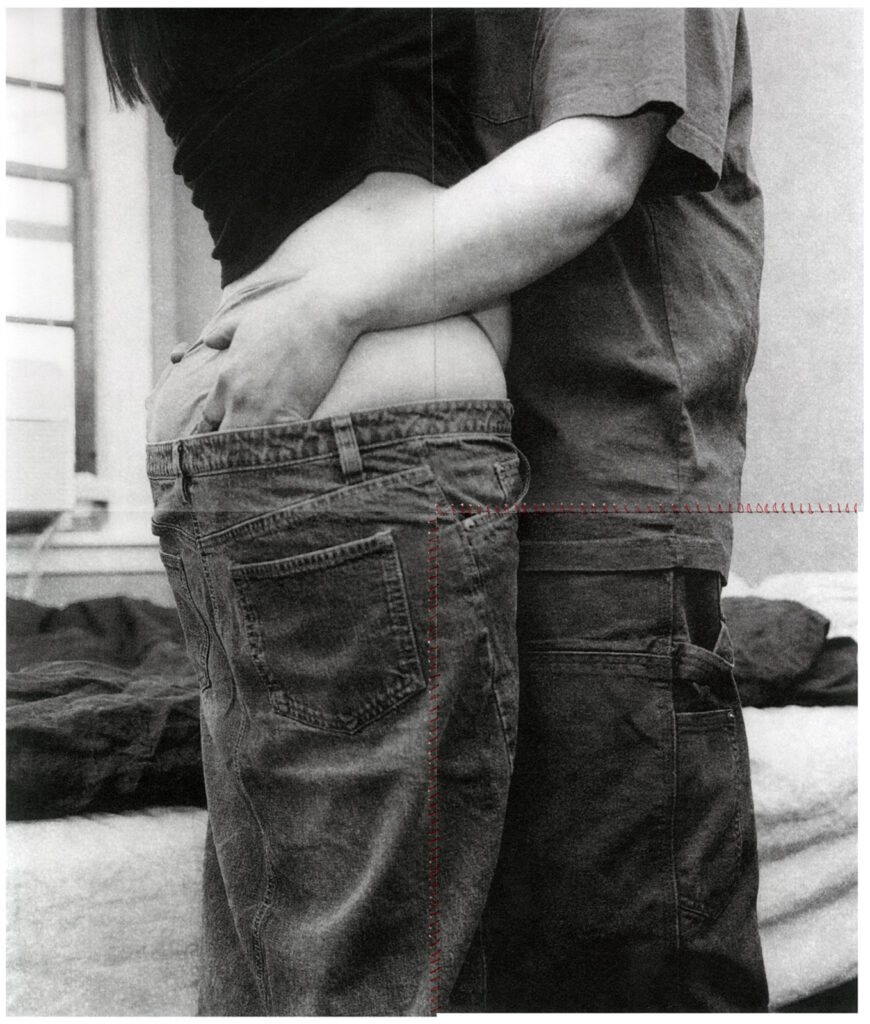
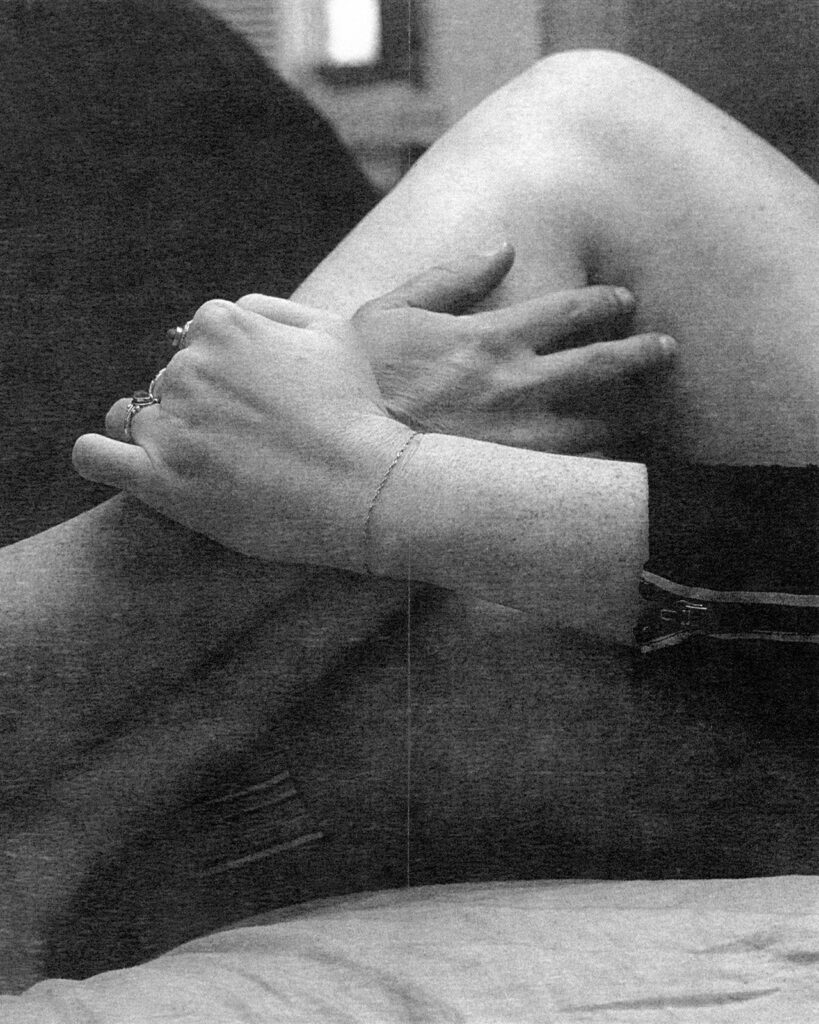
Your photographs are part of your own exploration of your lesbian identity. What role has art and photography played in discovering and navigating your sexuality?
I used to take a lot of photos of my (male) friends and sometimes with their girlfriends; this was when I was in the closet/just coming out as bisexual. Eventually, my gaze shifted to my femme friends, and the men slowly faded into the background and then completely dissipated. Once I came out as a lesbian, my work began to center on femmes, and then only queer people. Looking back at the timeline now, it’s funny how I was unintentionally coming out through photography. Now that I feel so solid and confident in my sexuality, it’s exciting to close out that chapter. Going forward, I’m thrilled to have the proper tools and the space to explore what queer eroticism looks like for me.
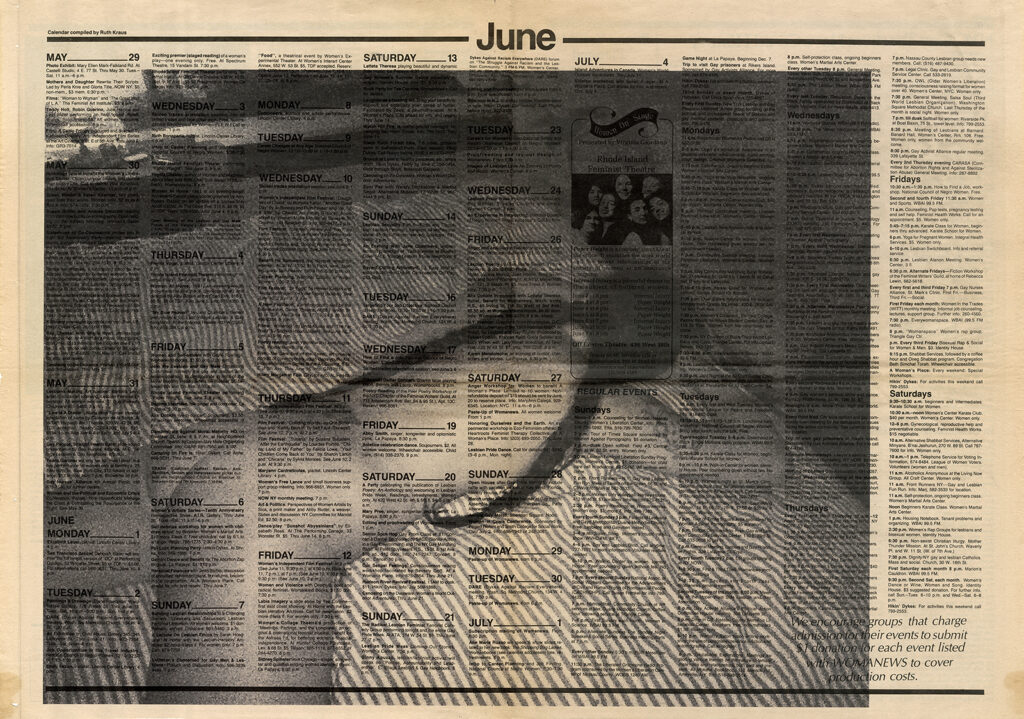
With visual artists who share both ‘serious’ work as well as more general photos on their Instagram, I’m always curious about the grey area between the personal and professional. Would you say you have a clear approach to curating your social media presence?
Grey areas and in-between spaces are important to analyze, and it’s something I frequently do. Since my work is so personal, I’m driven to the personal narrative of other artists. I appreciate seeing and showing the works in progress, the inspiration, and the person behind the art. I don’t have a clear vision of what my social media presence gives off, except that it sometimes stresses me out.
Your work was recommended to me by fellow photographer Ash Oakley. To continue this trend, is there a visual artist whose work you’d like to recommend?
My friend and former classmate, Krista Gay is an interdisciplinary artist who focuses on how Blackness is displayed in mass media. While particularly highlighting Black womanhood, her use of archival footage recalls an important ongoing history and perspective of Black diasporic culture. Krista’s work weaves together themes of cultural memory, personal narrative and media analysis by utilizing circulated records. Their work can be found on Instagram (@digitalblackface.jpeg) or their website kristagay.com.
More Abbey Gilbert:
